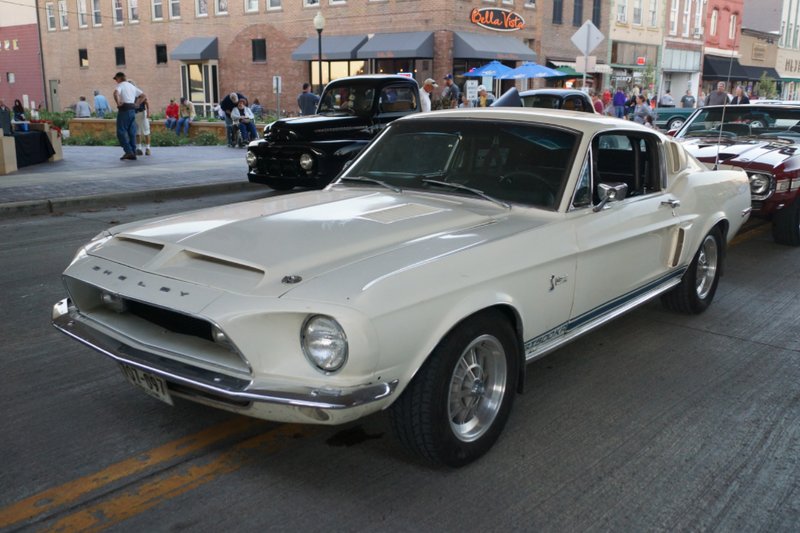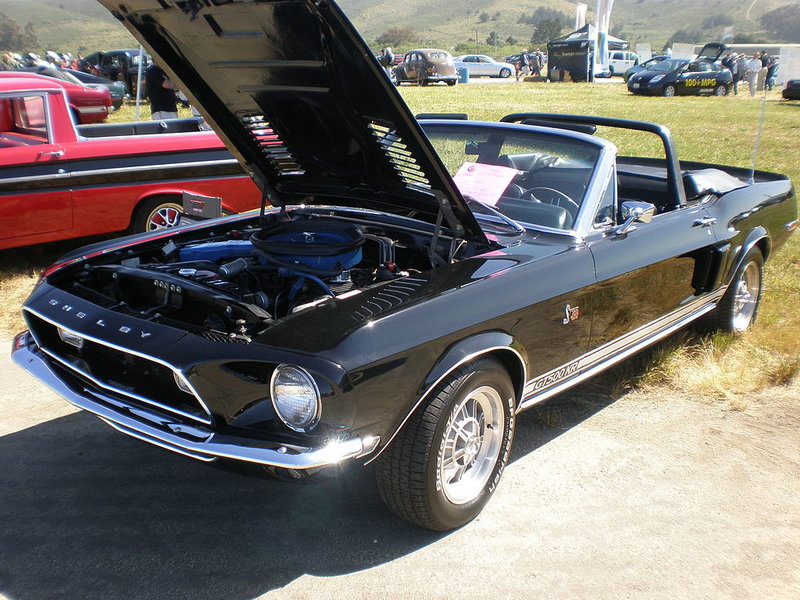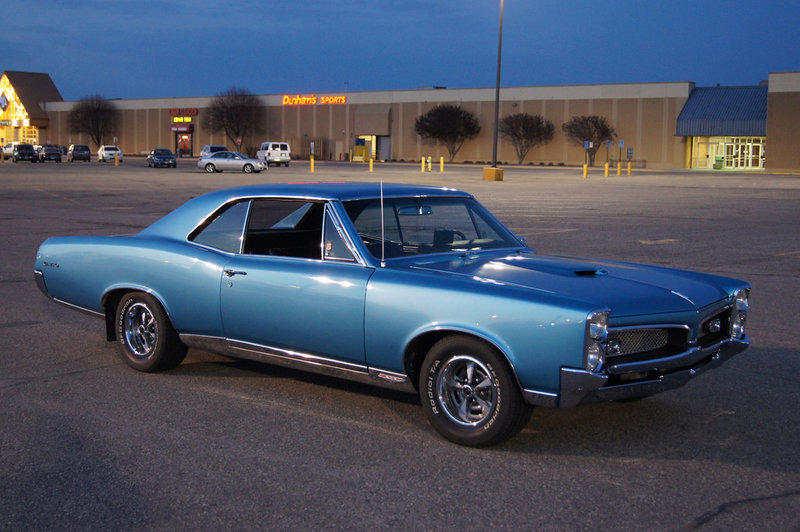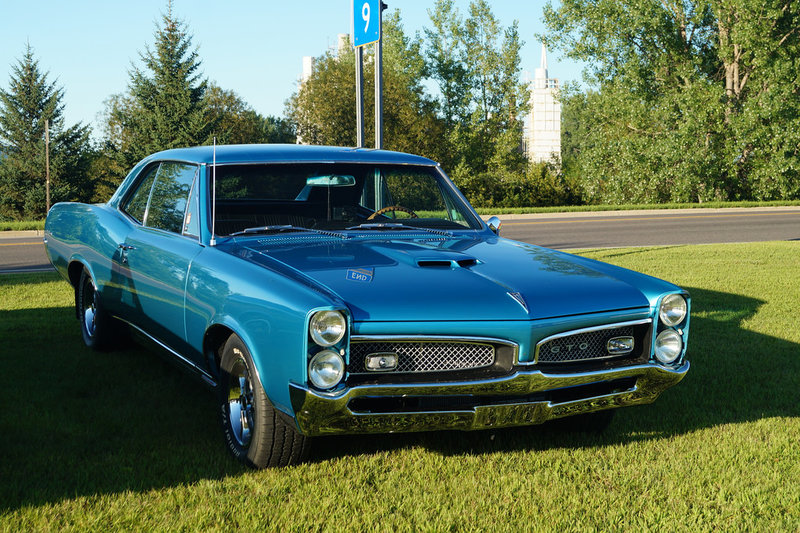1968 Cobra GT500

source: Flickr
We need to begin our perfect muscle cars overview with one of our favorites. In 1967, Ford developed what many argue to be most iconic, recognizable, and ahead-of-its-time muscle car, ever: The Shelby GT500. Of course, many thanks must be given to Hollywood – a quirky man named Nicolas Cage and a young and deceptively blonde Angelina Jolie share responsibility for truly rocketing the ole snake ‘Stang to fame. But what about the actual Cobra GT500?
What?
Yes, the Cobra GT500. Not the Shelby. See, the 1967 wasn’t the baddest snake in the grass. That title goes to the lesser-known, somewhat nuanced 1968 GT500KR (stands for King of the Road), also known as the Cobra. It’s so aptly nicknamed because of its massive 428 engine, the “Cobra Jet”. The thing was so gnarly that Ford actually lied about how much power it made. They said the car made “only” 355 horses and 440 torques. To put this into perspective, the latest and greatest 2018 Mustang GT clocks in around here.
What kind of monster motor could make so much power that underrating it (and making the lie believable) meant publishing these still-very-high numbers? The Cobra. The 428 CJ engine was a performance version of the 428 FE motor. Rather than go for bigger cylinder heads, the CJ received a massive 735 cm Holly four-barrel and heavier connecting rods that handled a 3.984” stroke and 4.13” bore. Distinguished Cobra historians will know that the KR’s engine’s valve covers had “Cobra Lemans” engraved in them, noting the Ford FE motor’s victory against Ferrari at the ’66 and ’67 Le Mans.
If that isn’t cool enough for you, consider the massive body modifications Carroll Shelby made to the Mustang’s original profile, just to accommodate the new, massive engine and upgraded drivetrain. In a move ahead of its time, the 1968 Cobra’s body was mostly manufactured out of fiberglass. This saved weight and allowed for more precise, flowing curves to be manufactured into the car’s lines.

source: Wikimedia
Separate high-beam headlamps were added to the front end and a thin chrome front bumper came seated just below the mesh grille. The small scoops present on the long hood were functional, providing much-needed air to the 428’s giant intake manifold. Functional air scoops were also applied to the rear quarters to help with brake cooling. Shelby took the fastback’s rear end further by adding horizontal taillights and a flush spoiler, emanating the popular “Kammback” styling of the era’s track cars and Euro roadsters.
Today, the King of the Road is a rare beast. Originals start at around the price of a new townhouse and quickly skyrocket to over $250,000, depending on color and configuration. Rarity alone earns the ’68 Cobra a top spot on our list of the 25 most stunning muscle cars.
1967 Pontiac GTO

source: Flickr
The Pontiac GTO ranks among the most recognizable and historic muscle cars, competing with the Mustang and Camaro. Its fandom reaches across movie cinemas, but there is one version of this classic fastback that we love most: The 1967 GTO. For starters, we look at its profile.
From the front, even a quick glance will form the opinion that this is one of the most intimidating and understatedly aggressive muscle cars of the era. While other models of the late 60’s were transitioning to low, sleek, fast and thin, the GTO stuck to its guns, emanating the general idea of the Friday night lead sleds of years past. Its tall, double-stacked headlights would look right at home a ’47 Cady, and it sports enough chrome and haunched curves to play a historically inaccurate extra in any upcoming Grease remake.
Inside, the ’67 GTO is topflight from visor to back seat. Beautifully stitched black leatherette seats are split by a low, flat, sensual wood-grained center console. That stunning grain work continues along the flat-faced dash, which also sports plenty of shine to contract the often-optioned brooding black seats and carpet. The doors also received a polished treatment and a tri-bar wood steering wheel ties off the whole package, accompanied by a simply elegant shift knob with a polished stick.

source: Flickr
For all its understated glitz, the 1967 GTO was not pure originality. Instead, it represented what subtle design and performance could contribute to making a car greater than the sum of its own parts. Pontiac engineers sculpted the GTO’s body from its preceding model years and added simple yet powerful chain link grille insert. The tail lamps were cleaned up, too.
But most importantly, the ’67 GTO sported a new 400 c.u. powerplant that made it the car to beat. Displacement was increased from the former 389 motor and while compression remained unchanged, a new single four-barrel “High Output” carb topped the engine off. This $77 addition included a higher-lift cam and improved headers with an open-element air filter to squeeze out some extra power. Those with cash to burn could opt for spending another $263 to get Ram Air. This “ultimate” GTO was underrated at 360 horses from the factory.
Ram Air-equipped GTOs were phenomenally quick off the line, thanks to a 4.33:1 rear and Turbo Hydra-Matic transmission. Rounding out the GTO’s street rod visage were available power front disk brakes for $105, and a hood-mounted tachometer for another $84. The ’67 GTO was a stunning muscle car not because of its wild marketing and bright paint schemes, but rather because of its understated machismo.
